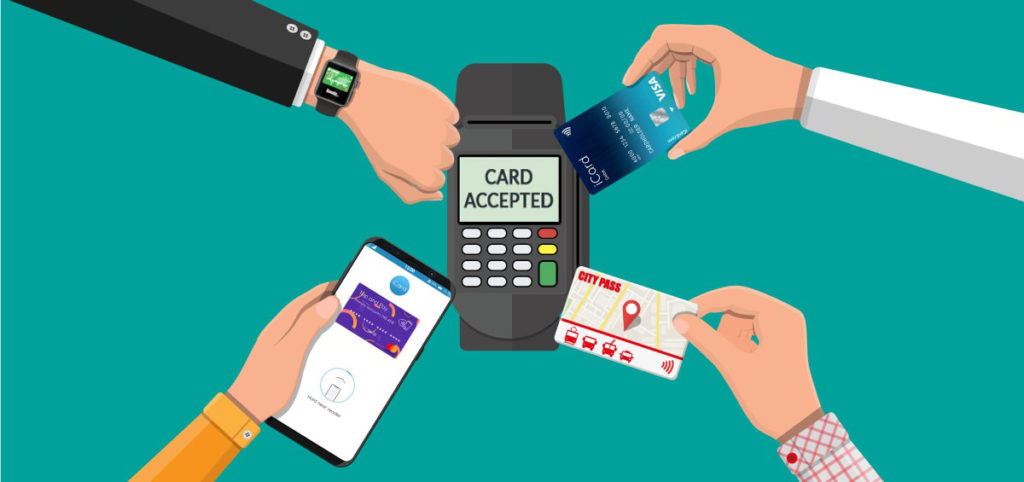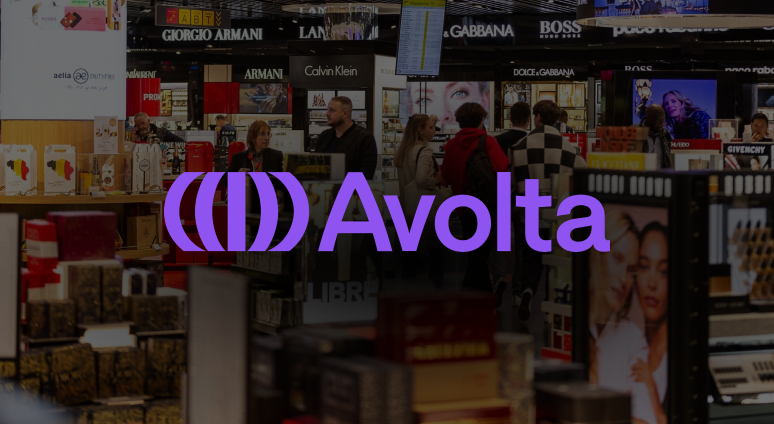Headless Loyalty Explained, for Non-Technical Business Leaders

Modifying legacy loyalty technology, to enable consistent and relevant engagement across the expanding number of customer-facing platforms, is becoming cost-prohibitive. The only efficient path forward is to put headless technology in front of your legacy systems – or, to migrate altogether.
Less-technical businesspeople may only care about loyalty technology to the degree that it serves two key objectives:
- Delivering a consistently good brand experience across all customer touchpoints
- Enhancing the value customers obtain, without increasing your costs
If you’re responsible for budgets, you’ll also have the added objective of keeping down development and maintenance costs which, for brands operating legacy loyalty systems, are becoming painfully high.
Of course, achieving these objectives involves many activities and competing priorities, such as preparing your team for today’s and tomorrow’s challenges, achieving target KPIs, managing many partners/vendors, coordinating initiatives across departments, reducing exposure to data security breaches, etc.
Managers have little time to become technology experts. But every brand stands to benefit from its leaders understanding the fundamental ways that technology can help you, or hold you back.
In the context of commerce and customer engagement technology, there is a tectonic transformation taking place, and as a leader, you need to understand the basics of headless platforms. They are not entirely new, but in the past year, they have matured to the point where they can solve major pain points, while significantly reducing operating cost.
This article explains the single biggest technological advantage you can harness by adding headless loyalty technology to your marketing stack, and it’s written for less technical people, who need to understand the implications of this change. If you want a more technical description of headless loyalty, read our previous article on the topic here.
This article has three sections.
- In section one, we’ll summarize why this is important: the specific reasons why headless platforms are vital for modern marketing, and the opportunity-costs of sticking with aging platforms.
- Section two dives deeper into headless systems: comparing them to legacy loyalty platforms, and introducing some of the language you’ll need in order to diagnose problems in your existing architecture, and to propose specific, actionable improvements.
- Finally, we’ll look at exactly what these changes will mean for your customer experience – down to the level of individual loyalty modules, and how they perform better as microservices.
Fundamentally, though, the message is this. Until the mid-2010s when mobile commerce really took off, old-style, bundled loyalty tech was good enough. It required a lot of updating, and that was expensive, but the world moved slowly enough that those updates remained practical and affordable.
Now, however, the goalposts – with regard to what constitutes a ‘good’ customer experience and good value – have shifted so far, that the cost and complexity of updating these aging systems is now a real hindrance to performing well.
If you don’t recognize your customer across every channel and touchpoint, they will feel you don’t care. Headless platforms give you the agility you need to continually improve your customer experience – without ripping out existing systems, without friction, and at far lower cost than the usual price-tag for software upgrades.
Why headless platforms are vital for modern marketing
The fundamental architecture, which underpins legacy marketing systems, was designed for a very different set of relationships between customers and brands.
In the early days of ecommerce, a simple purchase on a website was the essence of online shopping. These technology environments were effectively pre-built shops, now known as ‘monoliths’ – single technology platforms, built for a very specific range of purposes, in environments over which you had complete control.
I remember writing my first software in 1986 and how we had to hard-code network addresses, printer configuration codes, and text display features directly in the software. This gave us complete control over how output from the system would be displayed to users, but every time we wanted to change anything, it required opening up the software to change the variables, as well as all the indirect costs like testing, scheduling downtime for the software release, and documentation.
Ecommerce has changed. Now, the channels through which consumers interact with brands – often long before the purchase – are as diverse as the way we surf the internet. And increasingly, those interactions take place in environments you don’t control. The days of controlling the customer touchpoints via your own platforms and channels are over. Customers now spend the majority of their time in marketplaces, on social media platforms, and in super-apps operated by third parties.
The consequence, for companies which remain lumbered with monolithic technology, is that the gap between advancements in customer expectations (which take place rapidly) and the pace of corporate technology development cycles (which is often slow at larger companies) is such that brands cannot keep up with the pace of evolving channels anymore – unless they are leveraging headless technology.
The integration of new channels – from established ones like mobile and app commerce to more sophisticated ones like voice and VR commerce – has simply become too complex, and the maintenance unmanageable.
A different technology approach is needed. Enter: headless platforms.
Headless systems are the next generation of backend technical architecture for just about every application – not just in loyalty – because they give the business much more control to deliver services across all user-facing platforms, with much faster speed-to-market and agility.
I explain this properly in the next section, but the basic principle of a headless platform is that instead of a monolith, where your customer experience and back-end processes are tightly bundled, your back-end is a collection of individual microservices, connected to the customer experience(s) via APIs – so that you can change any individual element without a wholesale technology overhaul.
Like making pizzas: you want a consistent crust, but the flexibility to change the toppings whenever you want.
Any brand can embrace headless loyalty services quickly and easily – even if you already have millions invested in an aging loyalty program. Since Currency Alliance operates in the loyalty sector, I can speak with more confidence about loyalty. We typically see our clients placing the Currency Alliance platform in front of their legacy loyalty system to enable new features, or easy collaboration with other systems – kind of like a thin layer of low-cost technology, that extends the useful life of past investments and delays the cost of a complete cut-over. But that is also how SiteCore, commercetools, Spryker, BigCommerce and a few other leaders in their respective niches enable transformation and future-readiness.
Whether you have a pure headless loyalty architecture, or a hybrid loyalty solution with headless capabilities in front of a legacy system, your agility, in launching new capabilities in a consistent manner across all sales channels and non-sales customer touchpoints, will increase substantially. A headless loyalty solution gives you the freedom to experiment, add new touchpoints in minutes, and if you hit the goldmine with an initiative, you can scale with no concerns about performance.
For example, if you wanted to give customers 25 points for posting product reviews online, enabling this with a legacy loyalty platform might take 4 hours of frontend development, 16 hours of backend development and 6-8 hours of testing. Then, you need to schedule the release. These modest hours could be spread over 2 to 12 weeks. With a headless backend, there could be no changes required on the backend and 30 minutes to insert some JavaScript on the frontend and put that in production.
Encouraging non-purchase touchpoints like product reviews, referrals, social media mentions, interacting with content, etc. builds more emotional loyalty, can increase customer lifetime value, and move target customers closer to a purchase. They are important and often overlooked by brands – in large part because the cost to embrace them with legacy technology is simply too high.
Particularly in loyalty, enabling touchpoints across many new platforms/channels is important because material growth will not come from your already-frequent customers who are already spending on your primary platforms. Rather, growth will come from new customers who resemble your best customer, as well as those longer-tail customers that can be persuaded to spend more with you – given the right incentives.
Now, I’ll explain exactly how a headless platform provides that degree of agility.
Headless Loyalty Explained
There are not many people involved in loyalty marketing today that can remember applications that ran on mainframe computers with dumb terminals – often referred to as ‘green screens’, because the only thing that could be displayed on the monitors was text in green on a black background. The first loyalty programs in the 1980s were built on mainframe computers and there may still be a handful of loyalty programs where mainframes are still processing transactions.
The next generation of systems architecture was called the ‘client-server model’ and there is still a significant number of these systems in use today – although the ‘client’ software through which users would interact with the system has evolved to be a browser.
This generation of technology implies there is software running on your ‘client’ computer (laptop/desktop). The role of this software is to coordinate the communication of information and actions with the server. The server, meanwhile, coordinates data storage and the majority of application functionality.
While there could be many clients accessing a single server, the general interpretation is that there is one client accessing one server to complete business objectives (1:1). The client might be optimized to run on a Windows PC, Mac, or other desktop device, but the system was designed for a very controlled set of use cases, and the desktop device needed to know exactly how to interact with the server application.
The diagram below shows how these typical systems architectures evolved over time.
 During the past 15 years, the browser first introduced by Netscape in 1994 became more popular not only for searching the Internet (web), but also for running business applications within a company (1 server to many clients, i.e., 1:N –‘n’ being the number of clients). Many different browsers have come and gone in the past 25 years, and no doubt others will come in the future, but the beauty of a browser interface is that the browser can display information generated by a server in a fairly consistent manner across all devices (presuming standards are adopted by both systems), but most importantly, that there is no application logic (software) on the PC or mobile device other than the browser.
During the past 15 years, the browser first introduced by Netscape in 1994 became more popular not only for searching the Internet (web), but also for running business applications within a company (1 server to many clients, i.e., 1:N –‘n’ being the number of clients). Many different browsers have come and gone in the past 25 years, and no doubt others will come in the future, but the beauty of a browser interface is that the browser can display information generated by a server in a fairly consistent manner across all devices (presuming standards are adopted by both systems), but most importantly, that there is no application logic (software) on the PC or mobile device other than the browser.
This advancement removed the need to install software locally to access applications of all types. However, a single server still controls the user interface, how graphics or information is displayed, and takes care of all backend processing. This is still a 1:N relationship and the server must still be customized for each device accessing it.
The ways people interact with many devices today, for both business and personal reasons, have increased complexity tremendously, since servers must be prepared to support such a wide variety of user platforms. In some ways, delivering modified customer touchpoints to build loyalty has evolved only modestly, because the client-server architectures deployed in the early 2000s automated only a portion of this; and, it is amazing how many of those systems are still being used by brands.
So, importantly, you need to build solutions today for devices that customer may use in the future, but which are unknown at present.
Headless loyalty systems allow N:N functionality because the headless loyalty system is no longer a single server, but rather a series of microservices, that could be running across many different servers, in the same or many data centers.
That is why headless systems, and headless loyalty solutions, are so important in enabling companies to interact with customers no matter what device they’re using, or what third-party ecosystems they’re shopping your brand in.
Each microservice has a dedicated function to perform – such as:
- keeping track of a customer’s points balance
- keeping track of their transaction history
- implementing the loyalty rules that determine how many points they will receive for a specific action
- enabling consistent reporting, reconciliation, or settlement
- applying the right value to points when redeemed across an infinite set of rewards and redemption channels.
These are important features that allow your team to perform their jobs efficiently, and optimize the cost structure and value proposition across the entire business.
These microservices are accessed via APIs, so the microservice and server(s) on which they run don’t have to know anything about the client device, operating system, location, etc. Of course, they do need to know some important things (i.e., that the person accessing the microservice has permission to access the functionality) but in general, by de-coupling the client environment from the microservices server environment, each can run entirely independently.
There is an interdependency, but each system does not depend on the configuration of the other, and this allows each microservice to be optimized to perform its assigned task, while all the clients can access many microservices at the same time to complete a very rich set of functions.
You can read more about individual loyalty microservices here.
Importantly, this de-coupling of the frontend from the backend means that any component can be modified without affecting all the others. The only important thing is to ensure the API is updated to enable other systems to complete their desired tasks.
Software architectures that operate like this – Currency Alliance included – are based on the MACH principles
– meaning:- Microservices- based
- API-first,
- Cloud-native
- Headless
…and they enable a flexible enterprise — enabling the company to create whatever customer experience they want to offer across every touchpoint or channel. Functionality and scalability are made possible by modular and interchangeable components that work together via APIs in a way that developers love.
You can find information about the MACH Alliance here.
This significant evolution in systems architecture greatly reduces the cost and time it takes to bring new capabilities to market, and the maintenance cost is also greatly reduced. With a headless, cloud-based, microservices loyalty system, everyone is running the exact same version of software. As new features are released, everyone benefits immediately, and the cost is spread among all the companies which benefit.
This architecture also helps avoid many of the horrors you may have experienced with previous systems, such as finding bugs in the production environment, because dependent systems could not easily be tested prior to release.
Kelly Goetsch, Chief Product Officer for an advanced headless commerce platform, said:
The biggest challenge I see with people designing APIs is they write their code, and then they expose it through an API. That’s the exact opposite of what we do at commercetools. We have always been API-first, so we design the API from the perspective of developers, thinking how they want to interact with it and what is their optimal experience. Then we implement the code to support that API. If you do it the other way around, you end up with all sorts of weird things in your APIs and it just doesn’t work very well.
A headless loyalty system is like a box of features that you can use (or not), just like tools in a toolbox. You choose the right tool for the job and none of the other tools are affected.
Designing for connectivity
We’ll now look at specifically how a headless loyalty platform, made up of API-based microservices, can better support the factors that drive success in modern loyalty:
- Multi-brand collaborations between complementary brands have always reached the highest levels of customer engagement – and now connectivity and partner management can be done efficiently at scale
- Data Management. Not only is getting all your customer data in one place easier, but partners can contribute very insightful data to build rich profiles that are actionable to drive higher engagement based on improved personalization
- Extending Loyalty Commerce. Barriers to allowing customers to earn or redeem in many ways have all but disappeared. APIs enable systems to deliver much greater freedom and choice to customers to earn and use their loyalty value in the way most valuable to them
- Dynamic Accrual and Redemption. In most businesses, multiple systems enable the customer journey, provide access to inventory and product margins, and provide insights based on customer segmentation. In a headless platform, such systems can synchronize, in order to calculate dynamically how many points to offer the customer to maximize conversions, and to adapt the points value based on how the customer wants to redeem.
So, starting with…
1. Collaboration
In the seven or so years I’ve been networking in the loyalty industry, the same anecdote keeps cropping up: an account manager reaches a promising new partnership with a complementary brand, only to be told by her development team that the integration will take 6-9 months and cost ten thousand dollars.
This pace is unacceptable in an age when new customer propositions can be brought to market by competitors in days or weeks.
The root of the problem is that monolithic loyalty platforms were simply not designed to interconnect. Modern loyalty microservices based on APIs are built for connectivity, so new partnerships can be established in days. Streamlined partner discovery and partner contracting greatly reduces dependence on the legal department. Furthermore, consistent reporting, reconciliation, and settlement can greatly reduce indirect costs.
MACH-based systems also make it much easier to collaborate with partners because the systems can talk to each other – allowing you to co-create customer value with complementary brands. That value may come from complementary insights (data) that can be shared, or offering the right mix of goods or services from an ecosystem of partners.
Currency Alliance’s partner collaboration marketplace module has allowed many brands to connect in a matter of days, for practically no direct cost. Instead of each pair of partners connecting directly with each other, each partner simply connects to the Currency Alliance API and selects the partners it wants to collaborate with.
2. Data Management
A couple of years ago, I had dinner with the Strategic Partnerships Manager for one of the 10 largest airlines and he confessed that they have customer data in three separate systems – that each generate customer communications, but do not share data with each other.
This will be familiar to any loyalty professional still working with legacy loyalty tools. Legacy systems usually don’t make it easy to get data out of the loyalty platform and into your primary CRM – or vice versa. Imagine the conflicting messages a customer could receive from 3 systems, each working off a subset of data.
This is completely at odds with what constitutes effective data management in this day and age. Brands should be striving to…
- keep all their data in their existing, enterprise CRM – and not in some separate loyalty silo
- keep all their comms in one Campaign Management System, with triggers from many sources, rather than having third parties sending messages to customers.
Modern, API-first systems recognize that other systems in the technical architecture may be the single source of truth for information, and they ensure data ends up in the right place in the martech ecosystem, where it can be actioned. And, in loyalty, you also want to be able to benefit from data from your partnerships, to use that insight to personalize offers and co-create value.
For that reason, the Currency Alliance platform was consciously built without a CRM or Campaign Management module – because we know partners don’t value those technology services from us. However, we do enable easy data exchange in and out of those systems. This allows our clients to more easily incorporate our Points Bank, Rules Engine and Partner Collaboration modules into their broader technical architecture.
This also helps to keep costs down. You will find that roughly 70% of the typical cost of a loyalty management system comes from the CRM & Campaign Management modules (which are expensive to build to a high standard, and difficult to maintain as best-in-class). In legacy platforms which have these modules bundled in, you end up paying for them even if you only wanted the Points Bank and Rules Engine.
3. Extending Loyalty Commerce
Brands should no longer think about a ‘Redemption Catalog’, because it implies there is some type of defined (limited) catalog of goods and services available as rewards.
We believe customers need more freedom and choice to use their points/miles based on whatever delivers the highest perceived value to them. That might also mean being able to reward your staff for providing great customer service, or being able to apply a points-based discount to any transaction, at any touchpoint, without forcing the customer to shop around in separate environments.
In a monolithic loyalty stack, that would have been prohibitively difficult, because the points bank and loyalty rules engine would have needed to connect via a hardcoded integration to each of those touchpoints: every web store, every customer service channel, every app, every social media platform.
Because Currency Alliance is a headless, API-first loyalty platform, we enable the degree of freedom demanded by the modern consumer. Clients can aggregate anything in their redemption ecosystem and we can reconcile and settle with any supplier – paying them in the fiat currency they want, for the products or services provided.
That enables an entire ecosystem of redemption or spending among approved partners, and facilitates loyalty commerce between any of these stakeholders.
4. Dynamic Accrual and Redemption
Most loyalty programs offer the same percentage of the purchase in points. Simplicity is great, but this isn’t optimal because it does very little to increase customer lifetime value.
If you dynamically vary the number of points you offer, you can reduce your costs with customers who would have bought the item anyway, or capture sales where the customer’s behavior indicates that they might not buy without an extra incentive.
For points-based programs with opaque value, not every redemption is equal. The value of points should be higher when used on things that increase customer lifetime value, on distressed inventory, or on higher margin goods.
Exponential gains, enabled by headless platforms
Operating the next generation of microservices-based, headless loyalty solutions is a must in today’s competitive environment, where brands control fewer and fewer of the channels in which they interact with customers.
But sometimes, you have to slow down in order to speed up.
In loyalty, that slowing down needs to take place on the lengthy and costly development cycles, which most large brands are running continuously to keep their loyalty programs current and relevant to customers. I hear loyalty professionals complain that every change request takes months to negotiate, months to schedule, weeks to develop, and months to release every week – and when the changes are made by vendors, they come with an invoice for an unreasonable amount of money.
If you take some time out to consider a different technology approach – which in practical terms might only be a simple headless extension to your existing platform – you might sacrifice a few months (but probably weeks) of short-term gains, but also harness ongoing exponential improvements, in a hybrid loyalty ecosystem that can evolve at the pace of the modern consumer.
Simplification, saving money and gaining agility are beautiful things. But this will only happen if a company’s leadership teams understand the possibilities of modern technology, to drive their business’ digital transformation efforts in the right direction.
About Currency Alliance
Currency Alliance is not a consultancy, but having spent several years collaborating with the world’s largest loyalty programs, we are well-placed to talk about best-practice, and to introduce brands to potential collaborators who could create more interesting propositions for their consumers.
Our core value proposition and key point of differentiation continues to be our ability to make collaborations between partners easy and low cost. This is the ‘partner collaboration module’ which few other solution providers offer as part of their traditional, five-module loyalty stack.
Our partner collaboration module allows you to keep using your existing loyalty platform and simply add the Currency Alliance platform as a thin, lightweight layer of functionality in front of your existing system.
Currency Alliance’s headless loyalty platform also enables the construction of custom loyalty programs based on our API-first loyalty microservices. Brands such as Live Nation, Under Armour, Agilent (laboratory supplies), Showtime, Gameshow Network, and a few others are using us as the primary points bank and rules engine – plugged into their CRM/Campaign Management/martech stack – and in most cases they were able to complete deployment in less than one month, simply by adding a few customer-facing screens in their existing websites or apps.
Therefore, any company using Salesforce, Microsoft Dynamics, or any other suite of CRM and Campaign Management solutions, can rely on Currency Alliance for the main Points Bank and Loyalty Rules Engine as a headless loyalty platform, which can slot neatly into their broader stack of customer engagement software.
The result is reduced vendor cost and much greater agility.
For more information, visit CurrencyAlliance.com or click here to get in touch.
[i] Gartner Magic Quadrant for eCommerce 2020 Edition






